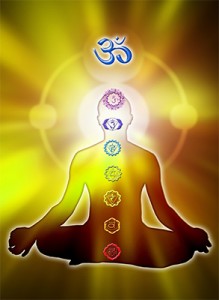This past year was a very visible one for Deaf Culture and American Sign Language. From viral videos to late night TV appearances, mainstream audiences just couldn’t get enough of Deaf superstars or their fascinating visual language. As we leave 2014, let’s take a look back at some of the most memorable Deaf pop culture moments of this year, and hope that 2015 brings even more awareness!
 20. KODA Signs Holiday Concert for Deaf Parents:
20. KODA Signs Holiday Concert for Deaf Parents:
Okay, technically this happened in December 2013, but it’s so cute I couldn’t leave it out! Kindergartener Claire Koch decided to use ASL at her school holiday concert to make sure her Deaf family members could enjoy the performance, and it was adorable. So adorable, that the video her mother posted went viral with over 8 million views to date!
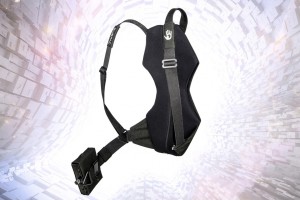 19. New Technologies Present New Possibilities:
19. New Technologies Present New Possibilities:
Each year, new technologies emerge which attempt to simplify and improve the lives of deaf individuals. A number of companies are working on different sign-to-speech translation solutions; while others are taking creative approaches to speech-to-text. One of my favorite ideas of 2014 is the StudioFeed music backpack, which turns music into a full body experience.
 18. Deaf Interpreter demonstrates what equal access really looks like at Atlanta PRIDE:
18. Deaf Interpreter demonstrates what equal access really looks like at Atlanta PRIDE:
Deaf interpreter David Cowan is a known favorite among Deaf LBGT individuals for his expressive and appropriately flamboyant work each year at Atlanta PRIDE. Across the country, PRIDE festivals tout themselves as all-inclusive events. Hiring a Deaf Interpreter that deaf/HoH audiences adore is a beautiful example of equality.
 17. People in Costumes Using ASL with Kids:
17. People in Costumes Using ASL with Kids:
From mall Santas to baseball mascots— the people behind the characters have been doing their diversity homework! This year, there were a number of heartwarming stories and videos featuring deaf children who are overjoyed to discover that their favorite characters can communicate with them using ASL. Learning even a few simple phrases can help deaf kids feel included!
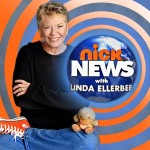 16. “Now Hear This” Premiers on Nickelodeon
16. “Now Hear This” Premiers on Nickelodeon
It was pretty inspiring to see a children’s television network take a genuine interest in Deaf Culture. This Nick News special focused on the lives of several deaf young people across the country, and showcased how there are many different ways to be a deaf person in a hearing world.
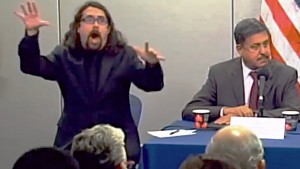 15. Deaf Interpreter goes Viral After NYC Ebola Press Conference
15. Deaf Interpreter goes Viral After NYC Ebola Press Conference
As Mayor Bill de Blasio delivered critical information to the citizens of New York regarding the Ebola virus, Deaf Interpreter Jonathan Lamberton addressed the deaf population. Many hearing individuals were fascinated by Lamberton’s dramatic signing style, as it was the first time they had ever seen a Deaf Interpreter in action.
 14. Popular TV Show “Fargo” Casts a Deaf Character who Uses ASL:
14. Popular TV Show “Fargo” Casts a Deaf Character who Uses ASL:
When creating characters for the FX series Fargo (based on the Coen brother’s film), the show’s creators decided to stray from the usual formula by writing a deaf character into the story. The character, played by actor Russell Harvard, is not included in the show to address deaf issues or explore Deaf culture; he is simply a normal character who happens to be deaf. Hopefully other programs will follow suit, as there are many talented deaf actors out there and all audiences deserve to see more diversity on screen!
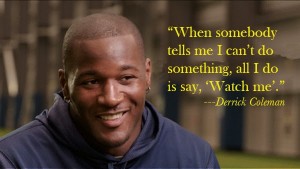 13. Deaf Athletes in Professional Sports:
13. Deaf Athletes in Professional Sports:
Seattle Seahawks player Derrick Coleman gained superstar status not only for his impressive athleticism, but because he proved that deafness does not have to be a barrier in professional sports. Coaches and scouts have taken note, and are now offering more deaf athletes the opportunities they deserve.
 12. Deaf Pioneers Leave Their Legacy:
12. Deaf Pioneers Leave Their Legacy:
Legendary Phyllis Frelich was the inspiration for, and the original star of, “Children of a Lesser God,” a revolutionary piece which introduced audiences to a complex, nuanced deaf character in a lead role. It won a Tony award for best play, and was later adapted into a film which won Marlee Matlin an Oscar. Frelich passed away this year, but her groundbreaking work has inspired and paved the way for generations of deaf performers to come.
In 2014, we also lost professor, writer, and poet Robert Panara. Panara helped translate classic works of literature into ASL, and was instrumental in the establishment of deaf studies higher education curriculum.
11. Violations of Deaf Citizens Rights Gain Mainstream Attention:
The tragic and deplorable treatment of deaf/HoH individuals by the criminal justice system is finally being exposed, thanks to the information age. Stories about deaf people being beaten by cops, wrongfully convicted, and abused in jail were widely read and shared across the internet; leading to an increase in awareness and outrage. While this is not exactly a victory, and certainly not cause for celebration, it has provided visibility to a very real problem and strengthened advocacy efforts.
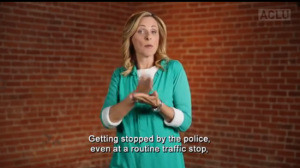 10. Marlee Matlin partners with ACLU and HEARD for #KnowYourRights videos:
10. Marlee Matlin partners with ACLU and HEARD for #KnowYourRights videos:
To help deaf citizens better understand and protect their legal rights, award-winning Deaf actress Marlee Matlin teamed up with the American Civil Liberties Union and Helping Educate to Advance the Rights of the Deaf to create a series of videos. The videos represent a larger movement within the Deaf community for self-empowerment through education. The internet amplifies the power of minority voices, exposes injustice, and provides resources for assertive self advocacy!
 9. Professional Dancer and His Deaf Mother Prove Music is for EVERYONE!
9. Professional Dancer and His Deaf Mother Prove Music is for EVERYONE!
Mark Villaver, a hearing dancer, and his Deaf mother share their love of music and dancing in one of the most FUN videos of 2014! Some people mistakenly think deaf people can’t enjoy music. This couldn’t be further from the truth!
8. FCC Cracks Down on Captioning:
The internet has come to the forefront of the entertainment industry. Unfortunately, closed captioning was often neglected when providers made the technology leap; leaving deaf individuals without online access to programming. In 2014 deadlines were set which require providers to caption all shows and video clips, and guidelines were established to guarantee the quality of captions. Over the next few years, we will see all major video content providers moving toward accessibility. Additionally, airlines and other places of public accommodation are feeling increased pressure to provide equal access for deaf patrons.
 7. Deaf Med Student Wins Legal Battle
7. Deaf Med Student Wins Legal Battle
After a lengthy court battle, it was determined that devoted deaf med students have the same right to attend medical school as hearing students. We call this a 2014 victory. Hopefully this will lead to more hardworking deaf young people pursuing careers in the medical field.

6. “The Tribe” Indie Film About Deaf Students Wins Over Critics:
The film, which is all sign language without subtitles, was critically acclaimed at Cannes and has won a number of prestigious awards. The lack of captions serves to alienate hearing viewers– who are accustomed to the privilege of communication access– yet the film is engaging enough to keep all audiences along for the ride.
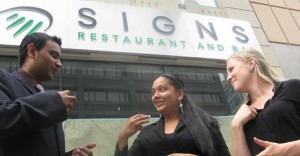 5. Signs Restaurant Opens in Toronto:
5. Signs Restaurant Opens in Toronto:
This fun concept for a restaurant creates a comfortable place for deaf diners; provides jobs for deaf food industry workers; and helps hearing people get a “taste” of what it’s like to be on the other side of the language barrier. The success of this endeavor may open the door for future deaf-focused businesses.
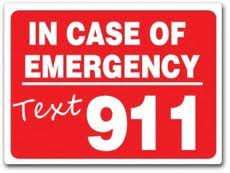 4. Text to 911 Rolls Out:
4. Text to 911 Rolls Out:
On August 8, 2014 the FCC adopted an order requiring wireless carriers and other text messaging providers to deliver emergency texts to 911 call centers. Equal access to emergency services was long overdue!
 3. ASL Rap Battle On Jimmy Kimmel Live:
3. ASL Rap Battle On Jimmy Kimmel Live:
This video instantly went viral because both deaf and hearing audiences love watching expressive ASL paired with hip hop beats. Sign language lends itself so well to the poetry and rhythm of raps. The two incredible interpreters skillfully turned spoken word into visual language, and Deaf performer Jo Rose Benfield wowed people with her enthusiastic interpretations.
 2. Deaf Superheroes Demonstrate the Power of Diversity:
2. Deaf Superheroes Demonstrate the Power of Diversity:
Throughout pop culture history, superheroes have struggled against the odds to save the day. Until recently, however, superheroes have been notoriously privileged individuals— white and able-bodied— 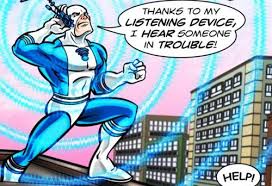 with very few deviations from the norm. In 2014, we saw diversity creeping into the fantasy world of good and evil when audiences were introduced to Deaf superheroes like Blue Ear and Superdeafy. These fictional heroes provide real life role models for Deaf children, demonstrating that deafness is only a minor obstacle to overcome on the way to greatness.
with very few deviations from the norm. In 2014, we saw diversity creeping into the fantasy world of good and evil when audiences were introduced to Deaf superheroes like Blue Ear and Superdeafy. These fictional heroes provide real life role models for Deaf children, demonstrating that deafness is only a minor obstacle to overcome on the way to greatness.
 1. Camp Mark Seven Goes Viral with “Happy” video:
1. Camp Mark Seven Goes Viral with “Happy” video:
If you haven’t seen this amazing upbeat video online, you must be living under a rock! Camp Mark Seven Deaf Film Camp nearly broke the internet with their cheerful ASL rendition of Pharrell Williams smash hit “Happy.” Camp Mark Seven teaches young deaf filmmakers how to write, direct, and produce their own films; which helps integrate more deaf voices in pop culture and Hollywood. The video has millions of views online and made people all across America stop and smile. Haven’t seen it?Well what are you waiting for… Get Happy !
2014 was an impressive year for deafness in the media, and these are only a few of the many pop culture moments! Of course we still have a long way to go, but when Deaf Culture becomes more visible, Deaf issues start getting the attention they deserve. By amplifying the voices of the community, and highlighting the accomplishments of deaf individuals, we can help the world see that deafness is not a barrier– merely a small obstacle on the way to greatness!
Have a safe and happy New Year!
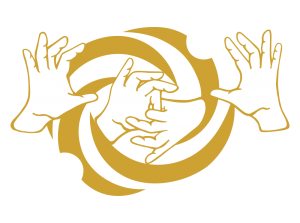

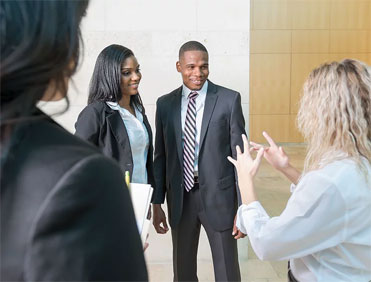

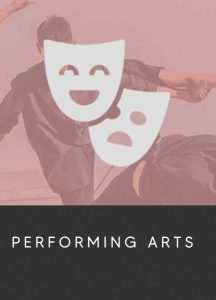
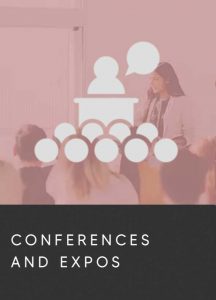
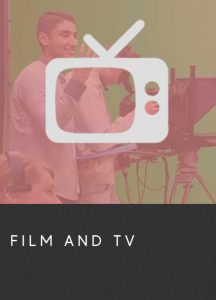
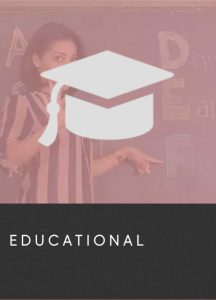
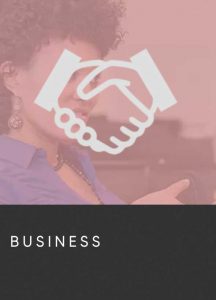
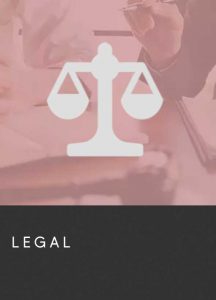


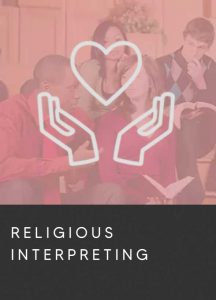
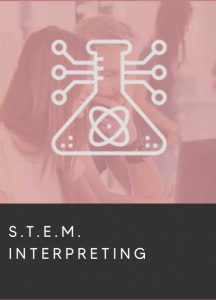
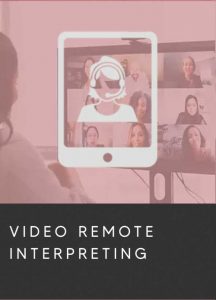
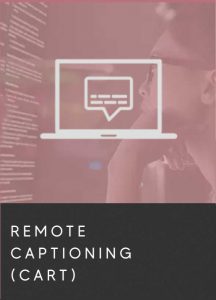

 Last weekend, singer/songwriter Sia was accompanied by a noteworthy performer as she sang her hit “
Last weekend, singer/songwriter Sia was accompanied by a noteworthy performer as she sang her hit “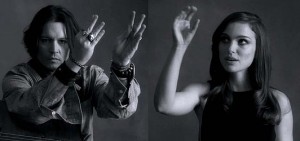 There is a fine line between showcasing the beauty of ASL, and utilizing sign language as a gimmick. Hearing artists often toe this line without even considering the opportunities that exist for better collaboration. To give an example, there was a bit of
There is a fine line between showcasing the beauty of ASL, and utilizing sign language as a gimmick. Hearing artists often toe this line without even considering the opportunities that exist for better collaboration. To give an example, there was a bit of  How did the music video for a world renowned artist, starring famous actors, get released with these fairly simple mistakes? In the end, accuracy took a back seat to aesthetics because McCartney’s video was not really intended to provide deaf people with access to his music. The use of ASL was merely an “artistic” choice; it was used to entertain hearing audiences.
How did the music video for a world renowned artist, starring famous actors, get released with these fairly simple mistakes? In the end, accuracy took a back seat to aesthetics because McCartney’s video was not really intended to provide deaf people with access to his music. The use of ASL was merely an “artistic” choice; it was used to entertain hearing audiences. If musicians want to truly connect with the Deaf community, there are plenty of ways to incorporate in Deaf voices into their work. Instead of hiring actors who are not fluent in the language to do ASL interpretation, creative directors could seek out some of the many talented deaf performers who are working hard to make a name for themselves.
If musicians want to truly connect with the Deaf community, there are plenty of ways to incorporate in Deaf voices into their work. Instead of hiring actors who are not fluent in the language to do ASL interpretation, creative directors could seek out some of the many talented deaf performers who are working hard to make a name for themselves. First off, there are some truly incredible Deaf music artists out there. If a hearing performer wants to challenge themselves to be more inclusive, working with a deaf musician could be an enlightening experience.
First off, there are some truly incredible Deaf music artists out there. If a hearing performer wants to challenge themselves to be more inclusive, working with a deaf musician could be an enlightening experience.  music more accessible to the deaf and hard-of-hearing community.”
music more accessible to the deaf and hard-of-hearing community.” 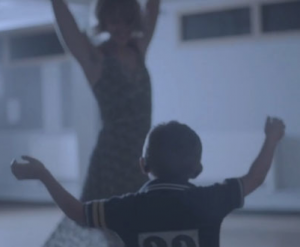 Music artists can work with deaf dancers, as
Music artists can work with deaf dancers, as  Sign language is a cornerstone of Deaf culture, and deaf individuals are very proud of their silent communication. It’s likely Sia was well-intentioned when she had her interpreter dress as a mime, but any message of deaf empowerment becomes a bit muddied when presented with this deaf/mute stereotype. Her performance on SNL was not the first time Sia incorporated sign language into her music. In 2008, her video for “
Sign language is a cornerstone of Deaf culture, and deaf individuals are very proud of their silent communication. It’s likely Sia was well-intentioned when she had her interpreter dress as a mime, but any message of deaf empowerment becomes a bit muddied when presented with this deaf/mute stereotype. Her performance on SNL was not the first time Sia incorporated sign language into her music. In 2008, her video for “ ASL is visually captivating, so it’s no wonder hearing artists are fascinated by this deeply expressive language. It is important, however, for these performers to remember that ASL is a legitimate language, complete with a distinct vocabulary and set of grammar rules. American Sign Language is not arbitrary hand waving– each gesture, facial expression, and classifier impacts the overall meaning. The best way to ensure a performance is culturally competent, respectful, and tactful is to consult with deaf parties directly about their language and expectations.
ASL is visually captivating, so it’s no wonder hearing artists are fascinated by this deeply expressive language. It is important, however, for these performers to remember that ASL is a legitimate language, complete with a distinct vocabulary and set of grammar rules. American Sign Language is not arbitrary hand waving– each gesture, facial expression, and classifier impacts the overall meaning. The best way to ensure a performance is culturally competent, respectful, and tactful is to consult with deaf parties directly about their language and expectations. 20. KODA Signs Holiday Concert for Deaf Parents:
20. KODA Signs Holiday Concert for Deaf Parents: 19. New Technologies Present New Possibilities:
19. New Technologies Present New Possibilities: 18. Deaf Interpreter demonstrates what equal access really looks like at Atlanta PRIDE:
18. Deaf Interpreter demonstrates what equal access really looks like at Atlanta PRIDE: 17. People in Costumes Using ASL with Kids:
17. People in Costumes Using ASL with Kids: 16. “Now Hear This” Premiers on Nickelodeon
16. “Now Hear This” Premiers on Nickelodeon 15. Deaf Interpreter goes Viral After NYC Ebola Press Conference
15. Deaf Interpreter goes Viral After NYC Ebola Press Conference 14. Popular TV Show “Fargo” Casts a Deaf Character who Uses ASL:
14. Popular TV Show “Fargo” Casts a Deaf Character who Uses ASL: 13. Deaf Athletes in Professional Sports:
13. Deaf Athletes in Professional Sports: 12. Deaf Pioneers Leave Their Legacy:
12. Deaf Pioneers Leave Their Legacy: 10. Marlee Matlin partners with ACLU and HEARD for #KnowYourRights videos:
10. Marlee Matlin partners with ACLU and HEARD for #KnowYourRights videos: 9. Professional Dancer and His Deaf Mother Prove Music is for EVERYONE!
9. Professional Dancer and His Deaf Mother Prove Music is for EVERYONE! 7. Deaf Med Student Wins Legal Battle
7. Deaf Med Student Wins Legal Battle
 5. Signs Restaurant Opens in Toronto:
5. Signs Restaurant Opens in Toronto: 4. Text to 911 Rolls Out:
4. Text to 911 Rolls Out: 3. ASL Rap Battle On Jimmy Kimmel Live:
3. ASL Rap Battle On Jimmy Kimmel Live: 2. Deaf Superheroes Demonstrate the Power of Diversity:
2. Deaf Superheroes Demonstrate the Power of Diversity: with very few deviations from the norm. In 2014, we saw diversity creeping into the fantasy world of good and evil when audiences were introduced to Deaf superheroes like Blue Ear and Superdeafy.
with very few deviations from the norm. In 2014, we saw diversity creeping into the fantasy world of good and evil when audiences were introduced to Deaf superheroes like Blue Ear and Superdeafy.  1. Camp Mark Seven Goes Viral with “Happy” video:
1. Camp Mark Seven Goes Viral with “Happy” video: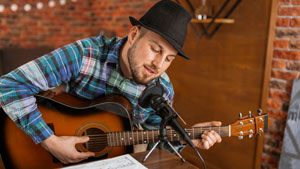 New York City has so many incredible Summer street festivals, art exhibits, and cultural events to enjoy. Now, imagine how many shows you would go to if you had to contact the event organizers weeks in advance, explain that you need special accommodations, and possibly even explain how to secure those resources. This is the burden placed on deaf people every time they want to attend and event, and it is a far cry from equal access.
New York City has so many incredible Summer street festivals, art exhibits, and cultural events to enjoy. Now, imagine how many shows you would go to if you had to contact the event organizers weeks in advance, explain that you need special accommodations, and possibly even explain how to secure those resources. This is the burden placed on deaf people every time they want to attend and event, and it is a far cry from equal access.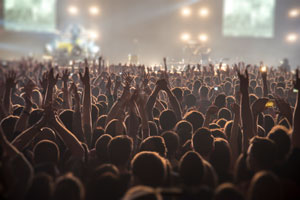 Organizer’s work long and hard to ensure their events are successful, but somewhere along the way they come to the conclusion that providing deaf access is a choice. We live in one of the most diverse countries on the planet, with laws that specifically protect the deaf and hard of hearing, but still excuses are made to exclude interpreters from event budgets. Without considering how challenging this makes it for deaf people to ever show up on a whim, event planners make the assumption that deaf attendees will always go through the steps to identify themselves and their needs.
Organizer’s work long and hard to ensure their events are successful, but somewhere along the way they come to the conclusion that providing deaf access is a choice. We live in one of the most diverse countries on the planet, with laws that specifically protect the deaf and hard of hearing, but still excuses are made to exclude interpreters from event budgets. Without considering how challenging this makes it for deaf people to ever show up on a whim, event planners make the assumption that deaf attendees will always go through the steps to identify themselves and their needs.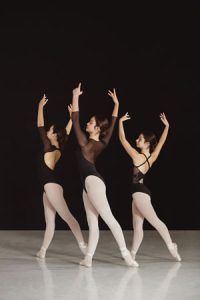 The
The 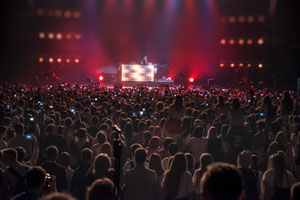 On December 28, Madison Square Garden was a sea of colorful tie-dye, flashing LED lights, and smiling faces. The crowd energy in the sold out venue reached a frenzy when the house lights went down, and rock band Phish took the stage. As Phish pulsated the building with their signature jams, their renowned lighting director illuminated the arena perfectly in sync with the music. The audience swayed, spun, and reacted to the antics on stage– including a profoundly Deaf fan who I had the privilege of interpreting for.
On December 28, Madison Square Garden was a sea of colorful tie-dye, flashing LED lights, and smiling faces. The crowd energy in the sold out venue reached a frenzy when the house lights went down, and rock band Phish took the stage. As Phish pulsated the building with their signature jams, their renowned lighting director illuminated the arena perfectly in sync with the music. The audience swayed, spun, and reacted to the antics on stage– including a profoundly Deaf fan who I had the privilege of interpreting for.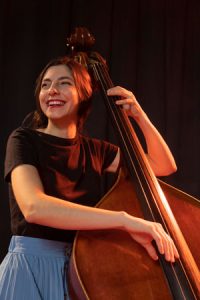 One of the most common misconceptions about deafness is that Deaf people can’t enjoy music. This is absolutely not true. Music is for everyone! Music embodies joy, pain, love, or heartbreak. Music comes from within the heart of the artist, and resonates with the souls of the audience. Each of us may have a different connection to a song, yet we can still enjoy it together. Deaf people are able to appreciate music because it’s not really about hearing; it is about sharing an experience.
One of the most common misconceptions about deafness is that Deaf people can’t enjoy music. This is absolutely not true. Music is for everyone! Music embodies joy, pain, love, or heartbreak. Music comes from within the heart of the artist, and resonates with the souls of the audience. Each of us may have a different connection to a song, yet we can still enjoy it together. Deaf people are able to appreciate music because it’s not really about hearing; it is about sharing an experience.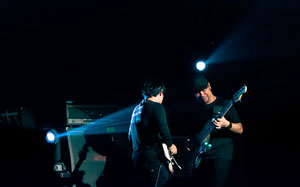 At a concert, Deaf fans use their other heightened senses to enjoy the crowd, the lights, the energy, the visual performance, and bass vibrations. When provided an interpreter, Deaf audience members can also be involved in the lyrical aspects of the concert. Interpreting at Phish was one of the most fun moments of my career; sharing the excitement of the performance with another fan felt so natural. Over the past few years, musical interpreting has gained quite a bit of attention. Barbie Parker has become well known for her emotionally-charged work at Lollapalooza, and other interpreters have been praised for their interesting interpretations of rap performances. Finally, music festivals like Bonnaroo, venues like Madison Square Garden, and performers like Bruce Springsteen have come to recognize that quality interpreters make or break a Deaf concert goers’ experience.
At a concert, Deaf fans use their other heightened senses to enjoy the crowd, the lights, the energy, the visual performance, and bass vibrations. When provided an interpreter, Deaf audience members can also be involved in the lyrical aspects of the concert. Interpreting at Phish was one of the most fun moments of my career; sharing the excitement of the performance with another fan felt so natural. Over the past few years, musical interpreting has gained quite a bit of attention. Barbie Parker has become well known for her emotionally-charged work at Lollapalooza, and other interpreters have been praised for their interesting interpretations of rap performances. Finally, music festivals like Bonnaroo, venues like Madison Square Garden, and performers like Bruce Springsteen have come to recognize that quality interpreters make or break a Deaf concert goers’ experience.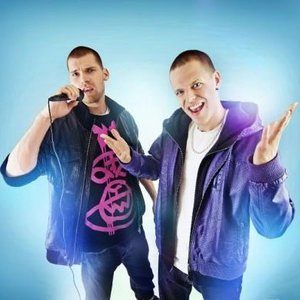 Deaf people can also be incredible musicians!
Deaf people can also be incredible musicians! 